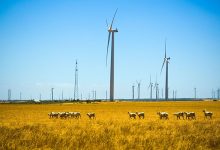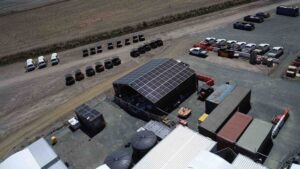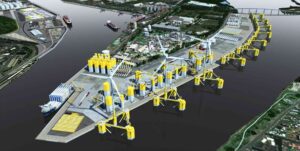Western Australia has set a new record for the share of wind and solar in its grid, on the same weekend that it also set a new record low for minimum demand, a result of the ongoing surge in rooftop solar installations.
The new record share of renewables is a bit difficult to report, because there are two different data sets. According to OpenNEM.org.au, the share of wind and solar in the grid reached 79 per cent around 11.30 in the morning on Saturday, March 13.
The Australian Energy Market Operator, agrees that the state hit a record renewables share, but because its data incorporates between 300MW and 400MW of embedded generation that provides “onsite” power for industrial facilities, it puts the renewables record at 65.6 per cent, at 12pm local time on the same day.
AEMO says the underlying load at the time was 2,572 MW, including that met by embedded generation, with 543 MW coming from large scale wind and solar and a small amount of biogas and landfill gas, and with another 1.68 GW from rooftop solar and the other non-scheduled generation.
The OpenNEM data puts the load at 2,224 MW, not including the load met by “embedded generation”, with some 1.24 GW of supply coming from rooftop solar, another 373 MW from wind and 135 MW from large scale solar.

Either way, the establishment of a new high for renewables is a significant achievement. It’s true that the share of wind and/or solar, reaches 100 per cent or more in South Australia, but that state’s grid is connected to the rest of Australia’s National Electricity Market, and can export excess power and import some when needed.
WA’s South West Interconnected System (SWIS) is a stand alone grid.
It’s not clear how much the share of renewables can grow on the SWIS without a significant investment in various forms of storage, battery, pumped hydro or hydrogen.
At the moment, the biggest growth in renewables is coming from homes and businesses still installing rooftop solar at record levels. But that’s creating a new phenomenon – minimum demand – that is fast becoming the biggest headache for the country’s energy market operator.
On Sunday, a day after the new benchmark in the share of renewables, minimum demand on the SWIS fell to a new record low of 949 MW, according to a post on LinkedIn from AEMO principal engineer Julius Susanto. 
The new minimum occurred just before noon on Sunday, March 14, when rooftop solar was generating around 1.27 GW. That beat a previous record low of 985 MW set on November 28 last year, when rooftop solar PV was providing some 1.19 GW, but the biggest surprise was that the new low came in autumn, rather than spring when such records are usually set.
“It’s unusual for minimum demand records to be broken so early in the year, but I guess all it takes is some cool weather and clear blue skies for rooftop PV to do its thing!” Susanto wrote.
That record is almost certain to be broken soon enough, with WA now at 1.7 GW of rooftop solar and still installaing at a rate of more than 30 MW a month. But it is also creating other issues in the grid.
Susanto noted in a later LinkedIn post two days later, that at 1pm on Tuesday, March 16, a large band of cloud “rolled over a big chunk of the SWIS” leading to a reduction of roughly 300 MW of rooftop PV output in less than 30 minutes.
In a grid with little storage, and no inter-connectors, that represents a challenge. “The speed and scale of the PV output reduction (which was ~15% of total SWIS demand at the time) caused system frequency to fall to 49.5 Hz, something we would normally only see when a large generator trips! ” Susanto noted.
That required AEMO to intervene and declare, somewhat obliquely, that it will dispatch “out of merit”, which is its way of saying it will preference whatever technology it chooses to maintain grid stability, rather than being obliged to wave through those with lower prices. Such events are now occurring regularly.
This explains why the state government is planning to build a 100MW/200MWh battery near Kwinana, to reduce the wear and tear on the gas generators that are required to respond so quickly to the variations, and the growing number of “community” scale batteries spread across the local network that can similarly absorb changes in solar output.
It also explains why AEMO is calling for more costly “reserve capacity” capabilities, arguing that it needs to build its contingency planning not just around the potential failure of the biggest operating coal or gas plant, as it usually does, but add in the potential loss of rooftop PV that could be triggered by frequency excursions that the coal or gas unit trip can cause.










